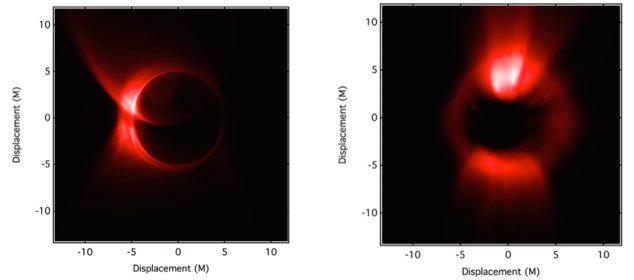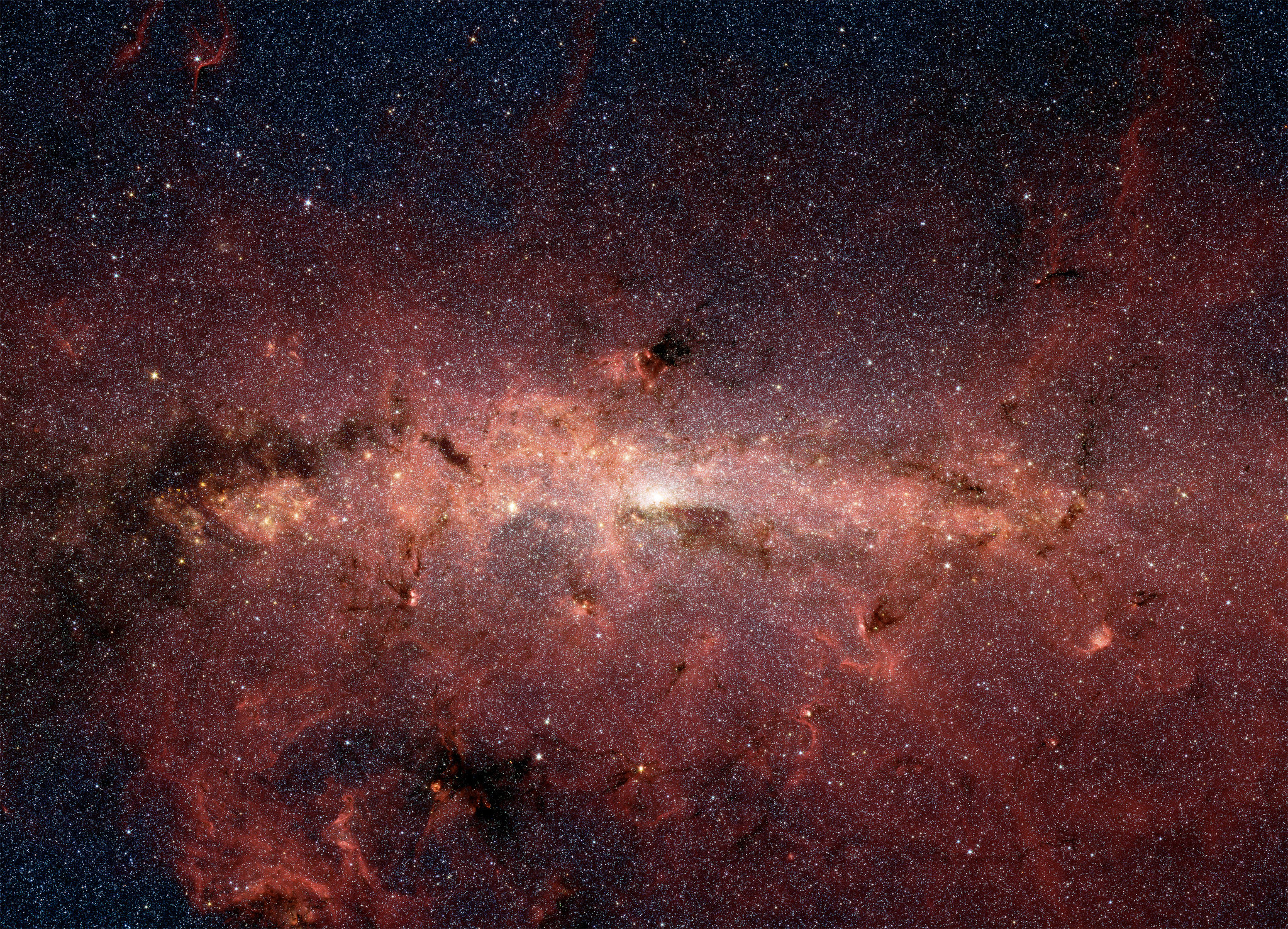It might sound trite to say that the Universe is full of mysteries. But it’s true.
Chief among them are things like Dark Matter, Dark Energy, and of course, our old friends the Black Holes. Black Holes may be the most interesting of them all, and the effort to understand them—and observe them—is ongoing.
That effort will be ramped up in April, when the Event Horizon Telescope (EHT) attempts to capture our first image of a Black Hole and its event horizon. The target of the EHT is none other than Sagittarius A, the monster black hole that lies in the center of our Milky Way Galaxy. Though the EHT will spend 10 days gathering the data, the actual image won’t be finished processing and available until 2018.
The EHT is not a single telescope, but a number of radio telescopes around the world all linked together. The EHT includes super-stars of the astronomy world like the Atacama Large Millimeter Array (ALMA) as well as lesser known ‘scopes like the South Pole Telescope (SPT.) Advances in very-long-baseline-interferometry (VLBI) have made it possible to connect all these telescopes together so that they act like one big ‘scope the size of Earth.

The combined power of all these telescopes is essential because even though the EHT’s target, Sagittarius A, has over 4 million times the mass of our Sun, it’s 26,000 light years away from Earth. It’s also only about 20 million km across. Huge but tiny.
The EHT is impressive for a number of reasons. In order to function, each of the component telescopes is calibrated with an atomic clock. These clocks keep time to an accuracy of about a trillionth of a second per second. The effort requires an army of hard drives, all of which will be transported via jet-liner to the Haystack Observatory at MIT for processing. That processing requires what’s called a grid computer, which is a sort of virtual super-computer comprised of 800 CPUs.
But once the EHT has done its thing, what will we see? What we might see when we finally get this image is based on the work of three big names in physics: Einstein, Schwarzschild, and Hawking.

As gas and dust approach the black hole, they speed up. They don’t just speed up a little, they speed up a lot, and that makes them emit energy, which we can see. That would be the crescent of light in the image above. The black blob would be a shadow cast over the light by the hole itself.
Einstein didn’t exactly predict the existence of Black Holes, but his theory of general relativity did. It was the work of one of his contemporaries, Karl Schwarzschild, that actually nailed down how a black hole might work. Fast forward to the 1970s and the work of Stephen Hawking, who predicted what’s known as Hawking Radiation.
Taken together, the three give us an idea of what we might see when the EHT finally captures and processes its data.
Einstein’s general relativity predicted that super massive stars would warp space-time enough that not even light could escape them. Schwarzschild’s work was based on Einstein’s equations and revealed that black holes will have event horizons. No light emitted from inside the event horizon can reach an outside observer. And Hawking Radiation is the theorized black body radiation that is predicted to be released by black holes.
The power of the EHT will help us clarify our understanding of black holes enormously. If we see what we think we’ll see, it confirms Einstein’s Theory of General Relativity, a theory which has been confirmed observationally over and over. If EHT sees something else, something we didn’t expect at all, then that means Einstein’s General Relativity got it wrong. Not only that, but it means we don’t really understand gravity.
In physics circles they say that it’s never smart to bet against Einstein. He’s been proven right time and time again. To find out if he was right again, we’ll have to wait until 2018.


This week’s wroth of space news is exactly what the 10 year old me in 1976 wanted the future news’ articles to be…
the underline was not there………….. ‘wroth’…. lmao
The same group of radio telescopes could form the receiver of a cosmic radar using compression of the original dispersed Fast Radio Burst to raise the reflected signal from beneath cosmic noise. The signal could contain information on rotation , atmosphere and plasma from “other |worlds”
Waiting for the “Einstein was wrong, everything is electricity” nut jobs to turn up. 😐
Waiting for the “Einstein was wrong, everything is electricity” people to turn up with their usual verbose nonsense.
I must re-emphasize that science is going completely the wrong way to contaminate our awareness and influence that we do not accept and understand the structure of the universe. If you do not understand the structure of the Universe, in vain doctrine “struggling” in the mud of ignorance.
A black hole is a place where the matter fransformiše the one from which he was formed, and it is ether, the substance which fills infinite universe. Black holes are formed when gravity bring together a critical mass and it reaches a critical value, then slowly we begin to “vacuum” surrounding matter into a black hole from which a photon can not escape. A BH over the horizon, does not present anything that has “escaped” from Bh, but near it came to the formation of quark gluon plasma, which will be turned into photons of gluons and quarks to neutrinos from. It’s going to BH to “suck”
Is it enough to go this way scientists study the formation of BH and its characteristics?